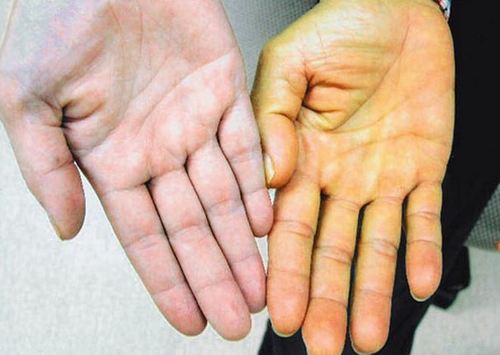Often in medical practice is a parasitic disease such as hydatid disease. Hydatid cyst of the liver for a long time can not Express themselves. Patients go to the doctor when hydatid cyst acquires a large size and compresses surrounding tissue.
The disease is spread in all countries of the world. Most often affects people living in southern countries. Hydatid disease is found in patients of any age and gender. Parasitic worms can live in various organs (lung, heart, liver).
The liver is affected most frequently. What are the causes of infection, symptoms and treatment of this disease?
Feature echinococcal
In Parasitology there are 3 classes of worms: flat, round and tapeworms. The causative agent of echinococcosis of the liver is a tapeworm. This small tapeworms. They can live and breed not only in human but also in animals (dogs, wolves, cats). The most dangerous are the larvae Echinococcus.
These worms are one of the smaller representatives of the tapeworms. Their body length varies from 3 to 5 mm. Adult consists of the following parts: body, 4 suckers, 2 hooks and several segments. The liver develops primarily hydatidosis Echinococcus. Larvae in the human body form a bubble.

This bubble consists of two dense shells, a large number of parasite larvae and the liquid contents. The latter is a nutrient medium for Echinococcus. It is important that the man is the intermediate host. Tapeworm is able to provide a large number of eggs (400-600). They are in one of the segments. The egg has oncospheres. They are capable of long time to survive in the soil and is sensitive to direct sunlight.
As infected people?
Hydatid cyst of the liver develops in case of contact with eggs in the digestive tract of a person. Infection occurs in several ways: food and contact-household. A sick animal provides eggs with feces into the environment. They get into soil and water. Infection of children and adults is possible by eating poorly washed vegetables, fruit and berries. Eggs can get on the skin and in a person’s mouth by contact with Pets (dogs) on the wool which they live. Risk factors for this disease include persons working in agriculture, hunters, shepherds, breeders, dog handlers.

There is another way of infection. Hydatid cyst of the liver may develop due to consumption of animal meat, the body inhabited by the larvae. The animals (livestock) can be infected by eating grass. Dogs, wolves – by eating raw meat of infected animals. In the body penetrate the embryos of Echinococcus, which are attached to the intestinal mucosa and begin to grow. After a certain time the adults are developing in the segments which are formed the eggs.
Eggs are released into the soil during defecation. Segments echinococcal capable of movement. They can come out with feces. Eggs are allocated to the germ in man through the blood rushing through the portal vein to the liver. Here are shaped larvae. Hydatid cyst may reach enormous sizes and weigh tens of kilograms.
Severe complication of the disease is the rupture of the cyst. This condition can lead to peritonitis, shock and death of the patient.
Features of the disease
You need to know not only the causes of the disease, but its symptoms. Hydatid cyst of the liver difficult to recognize.

Its symptoms include:
- weakness;
- malaise;
- pain in upper quadrant right;
- pain in the epigastric region;
- nausea;
- the appearance of the exanthema;
- itching;
- the changing nature of the chair;
- headache;
- heaviness in the right hypochondrium.
If symptoms include high fever, this may indicate the accession of secondary infection and suppuration of the cyst. With its breakthrough there is the risk of suppurative pleurisy or peritonitis. If the cyst compresses the biliary tree, symptoms can include jaundice. Thus skin becoming jaundiced. The stool is light and urine is dark. When hydatid cyst of the liver often there is hepatosplenomegaly.
Symptoms of compression of the portal vein may include changes in blood pressure, development of ascites. Important and objective symptoms. In the process of medical examination can detect an enlarged liver, bulging of the anterior abdominal wall at the site of localization of the organ.
Hydatid cyst of the liver can be suspected on palpation of the abdomen. A cyst is defined as a rounded, dense to the touch education.
Diagnosis and treatment
An experienced doctor must know not only the symptoms but also the treatment of echinococcosis of the liver. Before prescribing medicine to examine the patient.

Diagnosis includes:
- Ultrasound examination of abdominal cavity;
- computed tomography;
- palpation of the abdomen;
- detection in blood of specific antibodies by the reaction of the IFA or Phragmites;
- the examination of the sputum, the urine;
- General and biochemical blood analysis;
- the analysis of urine.
Using ultrasound cannot assess the size of the liver and to detect cysts. Needle biopsy in this situation is unacceptable, as it may contribute to rupture of the cyst and the development of anaphylactic shock. A blood test can detect the increase in the number of leukocytes, eosinophils, liver enzymes (AST, ALT), direct bilirubin. The most important value in diagnosis have symptoms of the disease. Treatment for hydatid cyst can be conservative and operative. Hydatid cysts are removed. Less organized the opening of the bladder, followed by drainage and disinfection.
At impossibility of the operation is assigned medication. The most effective drugs against Echinococcus are “Albendazole” and “Mebendazole”. The course of treatment time. It is determined by the physician. Is also symptomatic therapy. After the full course of treatment, symptoms disappear.
Prevention of hydatid disease includes examination of dogs and their deworming, compliance with sanitary measures on livestock operations, the examination of persons at risk, hand washing, heat treatment of meat, washing fruits and vegetables, boiling water.
Thus, hydatid disease can occur unnoticed for years. The disease requires surgical intervention and preventive measures to avoid re-infection.




Don’t wear seat belts lest you drown in your own urine?